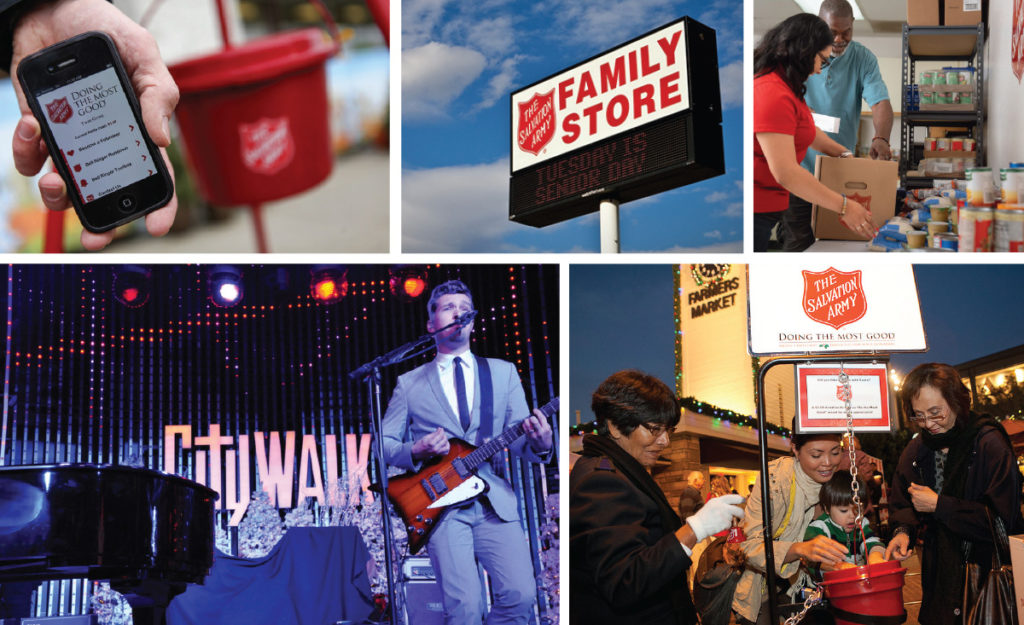How is The Salvation Army Funded?
"To best serve the disadvantaged and meet human needs in Jesus' name, The Salvation Army has been and continues to be intentional in diversifying our revenue sources."
Do you ever wonder how The Salvation Army raises enough financial support to serve over 27.5 million Americans each year? The Salvation Army is funded through a variety of sources, including public, private and government-based revenue streams. According to Forbes magazine, The Salvation Army is the sixth largest charity in the United States, with private donations of $2.3 billion in 2024. The Salvation Army is a non-profit organization, meaning we do not earn profits that we distribute to owners or shareholders. At least 83% of funds raised are used in programs and services that directly benefit those we serve, while only 17% are used for administration, fundraising, and organizational sustainability to support over 6,400 centers of operation in the USA.
Public contributions are our most significant funding source, with donations collected from individuals, corporations and foundations. The most iconic activity that generates public contributions is the Red Kettles fundraising campaign, with the bellringers seen and heard throughout the holiday season. The Red Kettle, a symbol of giving, has been one of our primary fundraising tools since its inception in 1891, when Captain Joseph McFee placed a kettle at the Oakland Ferry landing at the foot of Market Street in San Francisco with a sign that simply read “keep the pot boiling.” His intent was to raise enough funds to feed 1,000 people Christmas dinner. Now, more than 134 years later, the same concept raised nearly $100 million in the 2024 Red Kettle season to support Salvation Army services year-round.
Individuals, corporations and businesses are also provided with an opportunity to give through targeted mail appeal and online campaigns, as well as fundraising events that vary in each location. Some units hold annual dinners or galas, while others host golf outings, car shows, auctions, clay shoots, and even fashion shows. Large donations are also solicited for major projects like capital campaigns and new program start-ups.
Corporations and foundations often give gifts to The Salvation Army to benefit specific causes, services and programs. For example, Ford Philanthropy, with additional support from the Artichoke Garlic Foundation, recently provided three fully customized trucks to The Salvation Army Great Lakes Division’s Bed & Bread program for providing meals and essential supplies to the Detroit community. Similarly, FedEx has been donating one emergency disaster canteen per year to cities across the US. Physical gifts like these trucks and smaller donations like canned goods at food drives and toys through Angel Tree programs are essential non-monetary support referred to as “Gifts-in-Kind.” While not money in the regular sense, these sources of tangible support are crucial to our service and assigned a financial value in our accounting processes.
Private funds received include donor-advised funds and IRAs, where The Salvation Army is named as a beneficiary when a generous individual or group recognizes the work we do and wants to support it. The Salvation Army is also greatly appreciative of donors who include bequests for our organization in their wills or engage in other planned giving.
The Salvation Army also solicits and accepts local, state and national government grants that align with our mission without detracting from our message. We are often the conduit for distributing federal funds and resources. Government funding is not a primary source of income and tends to support specific social service programs, such as those addressing homelessness and disaster relief.
The Salvation Army also owns and operates thrift stores all over the country. The income generated by these stores is used to support local and regional services, especially our rehabilitation services.
And, of course, local Salvation Army units also raise funds internally through tithes and offerings, fundraising events and local donations.
To best serve the disadvantaged and meet human needs in Jesus’ name, The Salvation Army has been and continues to be intentional in diversifying our revenue sources. We continue in obedient faith, knowing that God will help us fund our ministries as we pursue His mission of redemption for the whole world.
Images via Red Shield Toolkit/ The Salvation Army Central Territory







